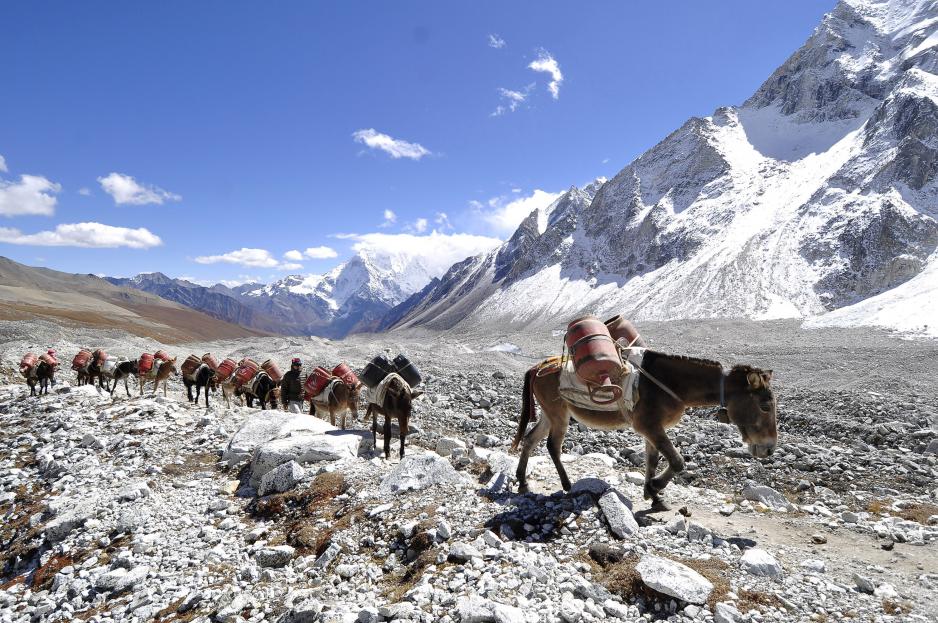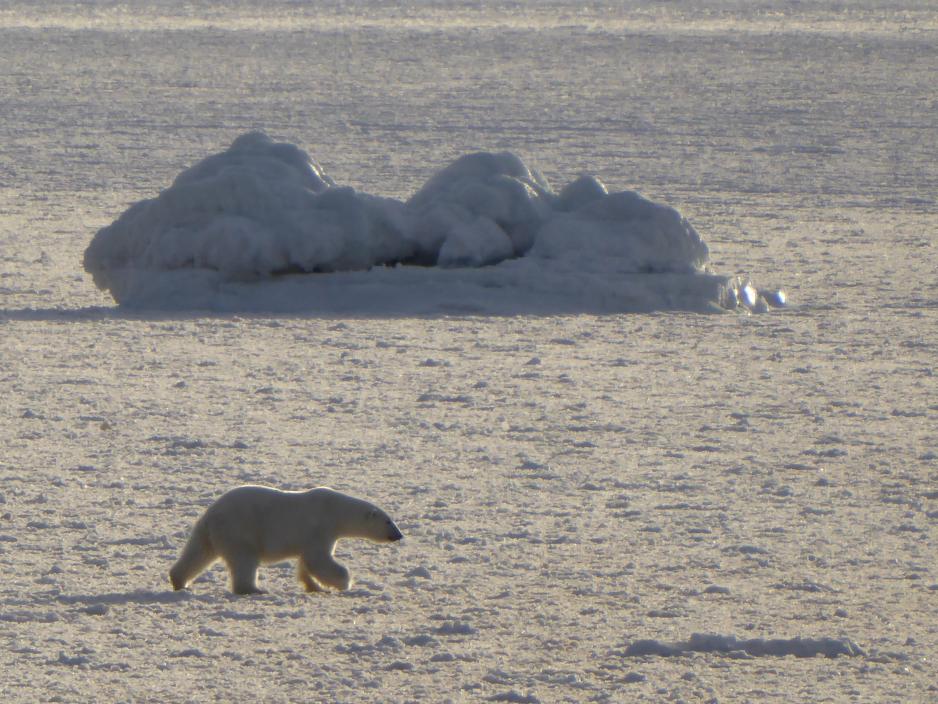Poles together: How the Arctic and the Hindu Kush Himalaya Regions are Working to Combat Climate Change

The struggle to subsist in the Himalayan region: Mules that transport cooking gas to a difficult-to-access lodge in Larke Pass, a popular trekking destination in Lamjung, Nepal. Photo by: Narayan Maharjan
Two years ago, the International Centre for Integrated Mountain Development (ICIMOD) brought Himalayan yak herders to meet Arctic reindeer herders in Tromsø for the Arctic Frontiers conference. In order to increase collaboration, coordination, and share its knowledge, ICIMOD returns to the conference early next year.
Climate change knows no borders, from the Arctic to the Earth’s highest mountains. The colder places of the planet and the populations that depend on them for their survival are all feeling the stress of change. Yet challenge can inspire innovation and help forge new relationships. The relationship between the Hindu Kush Himalaya region and the Arctic region is one such relationship.
Two years ago, the International Centre for Integrated Mountain Development (ICIMOD), a South Asian regional intergovernmental learning and knowledge organization based in Nepal, brought Himalayan yak herders to meet Arctic reindeer herders in Tromsø for the Arctic Frontiers conference. The yearly conference examines how increased human activity impacts the Arctic from economic, political, and social perspectives. Arctic Frontiers seeks to develop ways in which science can better inform policy decisions. ICIMOD’s initial participation helped establish a relationship that carries on to this day.
The third pole
The Centre represents the “third pole”, a region that, outside of the Polar Regions, has more snow and ice than anywhere else in the world. The challenges that the region faces are similar to those that the Arctic faces.
The Hindu Kush Himalaya Assessment, a report published by ICIMOD in February 2019, states that if we could reach a 1.5 degree world, temperatures in the region are expected to increase to 2.1 degrees Celsius by the year 2100. Such an increase would lead to the melting of one-third of the glaciers in the region. A failure to meet the Paris Climate Agreement’s target to cap the rising global temperatures at 2 degrees could result in a five-degree rise, if current emission trends continue.
Several negative impacts
Such a substantial increase could result in two-thirds of the glaciers in the region melting. The Arctic faces the same threat. Air temperatures in the Arctic are increasing at least twice as fast as the global average. It is expected that the Arctic could be ice-free during the summers in the near future.

Lone polar bear in Svalbard searching for food. Photo: Marry K. Waal Sandstå, NVP (Norwegian Scientific Academy for Polar Research)
The threat of increasing temperatures has more of an impact than just the loss of snow and ice. Since the mid-20th century, the shrinking cryosphere in the Arctic and the Himalaya has led to negative impacts on food security, water resources, water quality, livelihoods, health and well-being, infrastructure, transportation, as well as culture of human societies, particularly for indigenous people. The similarities in challenges means that both regions can potentially learn from one another and jointly develop tools for change. Combating climate change is a global challenge, which affects not just one region. A policy solution or failure in one region can have consequences in another.
From Himalaya to Tromsø
In order to increase collaboration, coordination, and share its knowledge, ICIMOD returns to the Arctic Frontiers conference early next year. In collaboration with UiT – The Arctic University of Norway, the Norwegian Scientific Academy for Polar Research, and GRID-Arendal, ICIMOD will co-host the “Arctic-Himalaya Futures: Improving Scientific and Political Coordination and Cooperation” side event.
This event is a major step forward in the process of creating much-needed long-term cooperation mechanisms between the regions, as one of its outcomes is the potential creation of a working group that includes key stakeholders from both the Arctic and Himalaya to share inputs on common issues.
The challenge of combating and reducing the negative effects of climate change is not one that can be done independently. Challenges can breed innovation and two seemingly different yet very similar regions coming together can potentially help bring about positive change and inspire other countries to act.
